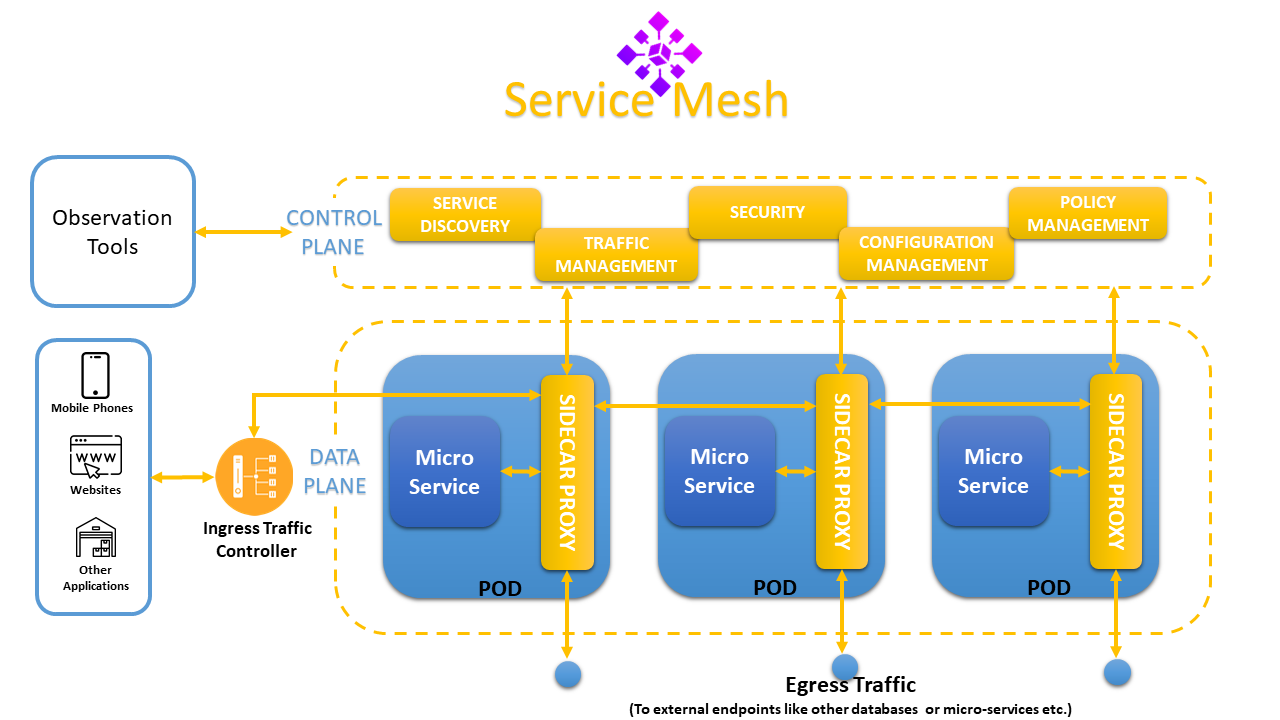As microservices architecture continues to dominate modern application development, managing communication between these services has become increasingly complex. Enter Service Mesh — a dedicated infrastructure layer that manages service-to-service communication, making it secure, observable, and reliable. But what exactly is a service mesh, and why is it so important in a microservices world?
What is a Service Mesh?
A Service Mesh is a configurable infrastructure layer built into your application that handles service discovery, load balancing, encryption, observability, retries, and failure recovery — essentially managing how microservices interact with each other.
It decouples these concerns from the application logic by injecting a sidecar proxy (e.g., Envoy) alongside each service instance. These proxies intercept all inbound and outbound traffic and communicate with a control plane that manages their configurations.
Why Do We Need a Service Mesh?
Microservices are designed to be small, autonomous, and independently deployable. While this brings great scalability and agility, it also introduces challenges such as:
- Complex service discovery
- Failure handling and retries
- Load balancing and traffic routing
- Secure inter-service communication
- Monitoring and observability
Without a service mesh, developers need to implement these features within each microservice, increasing complexity and potential inconsistencies. A service mesh takes care of these concerns in a consistent, reusable way.
Key Features of a Service Mesh
- Traffic Management
Fine-grained control over traffic routing, enabling A/B testing, canary releases, and blue-green deployments. - Security
Automatic mTLS (mutual TLS) encryption between services, ensuring secure communication without developer overhead. - Observability
Built-in metrics, logs, and distributed tracing provide deep visibility into service interactions. - Resilience
Features like circuit breakers, retries, and timeouts enhance the fault tolerance of microservices. - Policy Enforcement
Fine-grained access control and rate-limiting rules can be enforced easily.
Popular Service Mesh Tools
Istio
The most feature-rich and widely adopted service mesh. Works seamlessly with Kubernetes and uses Envoy as the default data plane.
Linkerd
A lightweight and performance-optimized service mesh focused on simplicity and speed.
Consul Connect
Developed by HashiCorp, it integrates tightly with the Consul service registry and works across various environments.
AWS App Mesh
A managed service mesh from AWS that makes it easy to monitor and control microservices running on AWS.
Service Mesh Architecture
A typical service mesh has two main components:
Control Plane:
Manages configuration, policy, and certificate distribution. It controls the behavior of the data plane components centrally.
Data Plane:
Composed of lightweight proxies (e.g., Envoy) deployed alongside each service instance. These proxies handle communication.
When to Use a Service Mesh?
A service mesh is powerful but adds complexity. It’s best suited for:
- Applications with many microservices
- Teams struggling with observability or secure communication
- Use cases requiring fine-grained traffic control
- Kubernetes-based deployments
For simpler applications or early-stage projects, it might be overkill and add unnecessary overhead.
Challenges and Considerations
Operational Complexity: Running and managing a service mesh can be challenging.
Resource Consumption: Proxies consume CPU and memory resources.
Learning Curve: Developers and operators need time to understand and use it effectively.
Conclusion
A Service Mesh is a game-changer for managing microservices at scale. It abstracts away the complexities of service communication, enabling developers to focus on business logic. As microservices architectures continue to grow in size and complexity, service meshes will become an essential part of the modern cloud-native toolkit.
If your team is looking to improve security, observability, and reliability across services — investing time in learning and deploying a service mesh could pay significant dividends.

Leave a Reply